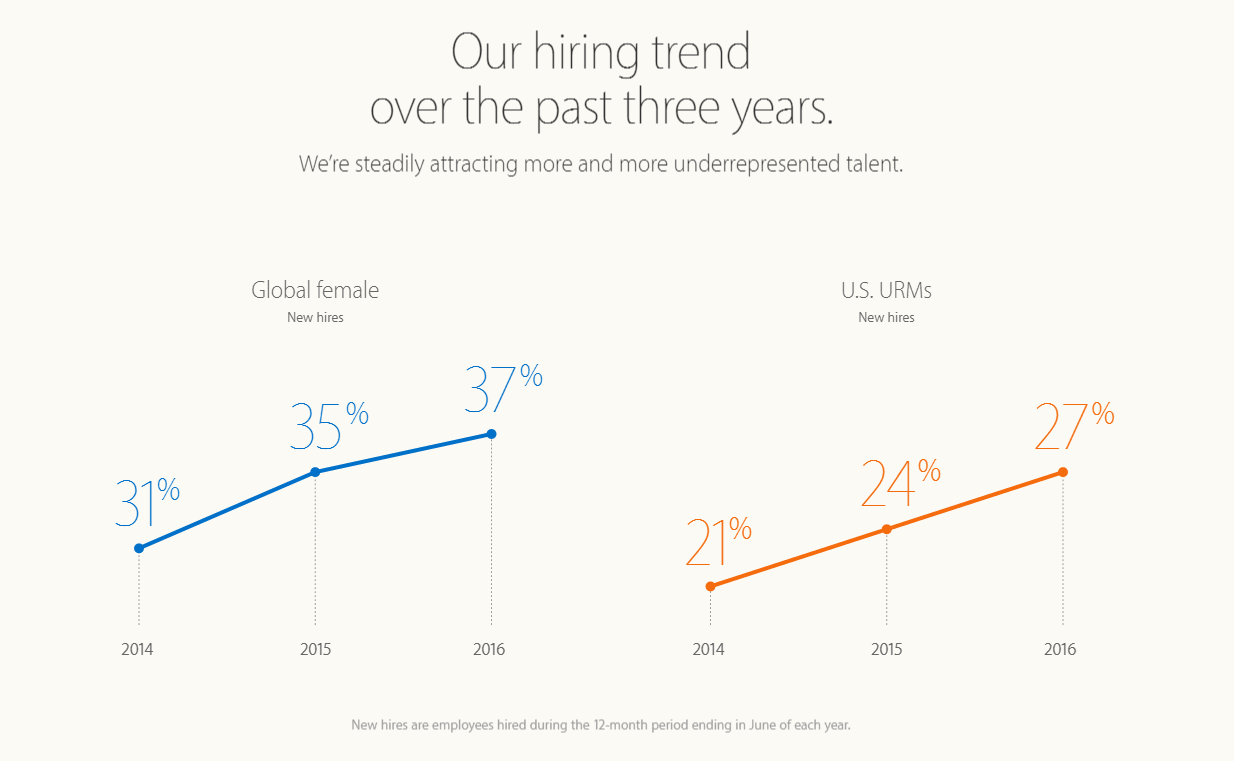
Earlier this week, Apple released its 2016 Inclusion and Diversity report. The numbers indicated slight progress toward the tech giant accomplishing its diversity and inclusion goals. The report revealed that the representation of women and underrepresented minorities in their 2015 hires exceeded the overall representation of these groups within their workforce. Moreover, Apple announced that it achieved pay equity among men/women and white/non-whites for similar roles and performance across the U.S. workforce. While there is certainly still work to be done at Apple, their slight progress is still progress. Something they’re doing is working.
Over the years, there have been many studies and pieces around why diversity and inclusion programs don’t work. Some of this research has attributed failed diversity and inclusion programs to baseless training, grievance programs, ineffective performance management systems, or a reactive focus on affirmative action/EEO compliance. A lot of this research is true. But they beg to question, what does it take for diversity and inclusion programs to succeed?
In light of the number of organizations who have actively began to embark on their diversity and inclusion journey, this conversation is timely and important. Throughout the month of August, we’ll be sharing factors that we’ve observed among clients that contribute to successful and sustainable diversity and inclusion strategies. For example:
- Engaged leadership
- A developmental approach to diversity and inclusion learning
- Cross-functional collaboration
- Meaningful and measurable metrics
Each week, we’ll be taking a deep dive into these factors, and rather than focusing on why our efforts sometimes fail, highlighting the conditions necessary for us to continue to move the needle forward.




















I can really see how having a program for diversity in place would be beneficial to your company. If you want to have a well rounded workforce working underneath you, I can see how you would want to make sure everyone feels included in everything the company does. Thanks for the information, it gives me a lot to think about!